Gas-insulated switches: reference points and connection rules
The functioning of high-voltage electric networks by current characteristics is not comparable with the work of household analogues. Accordingly, in the event of an emergency, more powerful devices than standard automatic devices are needed to turn off the equipment and extinguish the electric arc.
As protective structures, SF6 circuit breakers (EM) are used, which can be controlled both in manual mode and using automation. We have described in detail the design features and the principle of operation of the devices. They gave recommendations for installation, connection and maintenance.
The content of the article:
Definition and use of SF6 gas
SF6 is sulfur hexafluoride, which is classified as electrical gas. Due to the insulating properties it is actively used in the manufacture of electrical devices.
In neutral state, SF6 gas is a non-flammable gas without color and odor. If we compare it with air, then we can note a high density (6.7) and a molecular mass exceeding the air mass by 5 times.
One of the advantages of SF6 gas is its resistance to external manifestations. It does not change characteristics under any conditions. If decay occurs during an electric discharge, then soon a full-fledged recovery is necessary for work.
The secret is that SF6 molecules bind electrons and form negative ions. The quality of "electronegative" endowed 6-fluoride sulfur with a characteristic such as electric strength.
In practice, the electric strength of air is 2-3 times weaker than the same property of SF6. Among other things, it is fireproof, as it relates to non-combustible substances, and has cooling ability.
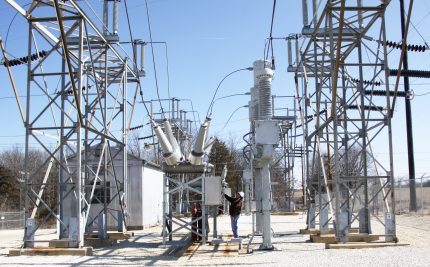
The listed characteristics made SF6 gas most suitable for use in the electrical industry, in particular, in the following devices:
- power transformers operating on the principle of magnetic induction;
- switchgears of complete type;
- high voltage lines connecting remote installations;
- high voltage circuit breakers.
But some of the properties of SF6 led to the fact that it was necessary to improve the design of the circuit breaker. The main disadvantage relates to the transition of the gaseous phase into the liquid, and this is possible with certain ratios of pressure and temperature.
In order for the equipment to work without interruptions, it is necessary to ensure comfortable conditions. Suppose that for the operation of SF6 devices at -40º, a pressure of not more than 0.4 MPa and a density of less than 0.03 g / cm³ are necessary. In practice, if necessary, the gas is heated, which prevents the transition to the liquid phase.
SF6 circuit breaker design
If we compare the gas-insulated devices with analogues of other types, then by design they are closest to oil devices. The difference is in filling the chambers for extinguishing the arc.
As a filler in oil circuit breakers An oil mixture is used, while for SF6 mixtures - 6-fluoride sulfur. The advantage of the second option is in durability and minimum maintenance.

The methods for extinguishing an electric arc depend on many factors, among which decisive are the rated current and voltage, as well as the conditions of use of the device.
In total, four types of EV are distinguished:
- with electromagnetic blast;
- with blast in SF6 gas - with 1 pressure stage;
- with longitudinal blast - with 2 pressure levels;
- with auto-generated blast.
If in air devices in the process of extinguishing the arc gas enters the atmosphere, then in SF6 gas it remains in a confined space filled with a gas mixture. At the same time, a slight excess pressure remains.
Column and tank devices
In practice, two types of SF6 plants are used:
- tank;
- core.
The differences relate to both structural features and the principle of extinction of an electric arc. In terms of the external arrangement, the core ones are reminiscent of low-oil analogues: they consist of two functional parts - arcing and contact, they have the same volumetric dimensions.
The disconnecting devices are designed to operate on a 220 V network and relate to single-phase equipment. An example of a column type SF6 circuit breaker is the LF 10 Schneider Electric.
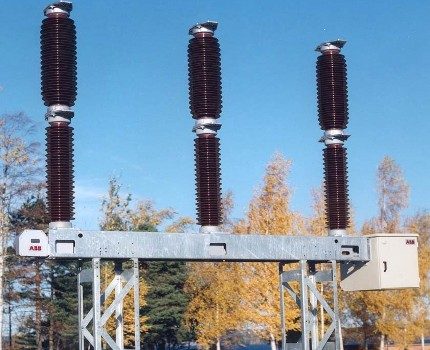
Tank SF6 gas appliances are smaller and equipped with a multi-phase drive. This distribution allows you to better control and smoothly adjust the voltage parameters.
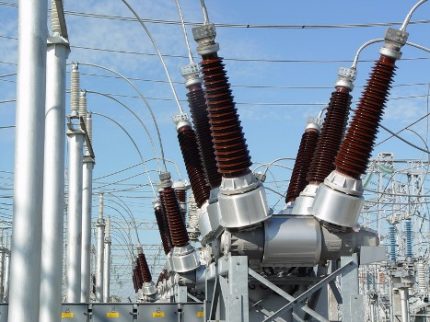
An example of a tank device is the DT2-550 F3 Alstom Grid gas installation. Such devices have positively proven themselves in electrical systems with a voltage of 500 kV.
The design is assembled and equipped in such a way that it functions without failures at low temperatures (critical), high humidity, as well as in regions with seismic activity and excessive atmospheric pollution.
Arc extinction principle
How the device works, consider the example of the LW36 switch of the Chinese manufacturer CHINT.
When disconnected, the spring acts on the dynamic elements of the cylinder, and they drop down. All contacts, except for interrupter contacts, open.When the arcing contacts, through which the current passes, are disconnected, an electric arc arises.
Hot gas moves into the heat chamber, the check valve is activated. When gas from the heat chamber is blown into the gap, arc extinction occurs.
If small currents are switched off, then the pressure in the heat chamber is not enough, therefore the pressure from the compression chamber is attracted (it is always higher). The non-return valve opens, the gas flows unhindered into the gap and extinguishes the arc when passing through zero.
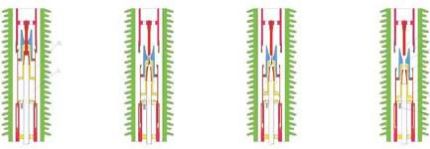
Modern core units have improved performance. Maintenance is reduced to a minimum, switching resource is increased. SF6 circuit breakers are distinguished by low noise level, reliable mechanics, ease of installation and testing.
Tank models are adjusted using a drive and transformers. The spring or spring-hydraulic drive controls the on / off processes, the level of retention of the electric arc.
What is a drive for?
The drive is designed to perform all operations associated with turning on / off or holding the unit in a certain position. The diagram shows where exactly the drive can be located. Usually this is the surface of the earth or a low support, providing maintenance personnel with easy access to control devices.
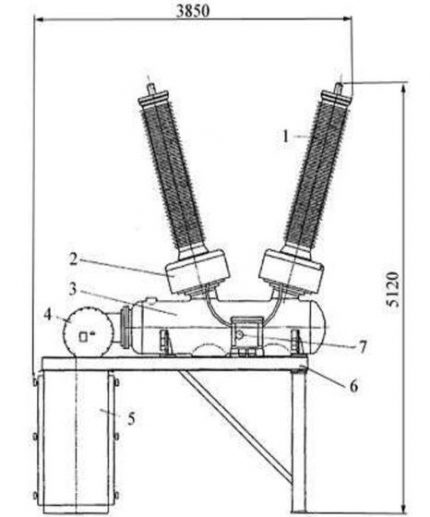
The drive consists of a switching mechanism, a locking device - a latch, a trip mechanism. The inclusion process should occur as quickly as possible to avoid welding of the contacts.
During start-up, they make great efforts to overcome the friction forces of all the elements involved. Disabling is simpler and consists in the reverse movement of the latch, which ensures inclusion and its retention.
There are several ways to enable / disable:
- mechanical;
- spring;
- cargo;
- pneumatic;
- electromagnetic.
For low-power systems, manual control is used. In this case, the strength of one operator is enough. Manual gears are usually turned off automatically. The spring drive is also manually actuated, but low-power motors are sometimes involved.
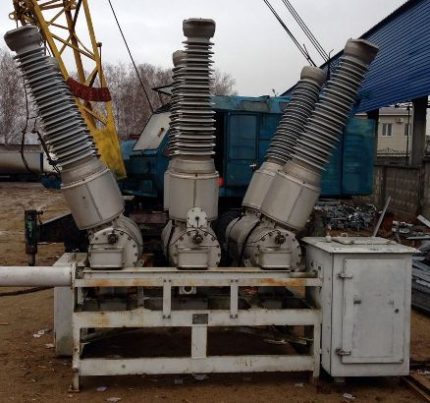
The use of an electromagnetic drive requires more energy, therefore a constant current source of approximately 58 A with a voltage of 220 V. is required. As a backup shutdown mechanism, there is a manual lever. Electromagnetic devices they are reliable, therefore they are successfully operated in areas with severe winters. Minus - the need for a powerful battery.
The pneumatic drive is characterized in that instead of an electromagnet, the main working element is a cylinder / piston pair. Thanks to compressed air, the switching speed is much higher than that of previous models.
Advantages and disadvantages of using EV
SF6 circuit breakers, like other types of switchgear, have several advantages and disadvantages. When choosing an installation, the necessary calculations are made and, in addition to technical characteristics and design features, take into account the pros and cons of models.
SF6 circuit breakers operate in difficult conditions with periodic vibrations, low temperatures (with heating), in fire hazardous areas.
The disadvantages include the high cost of the filler - SF6 gas, the specifics of mounting on a shield or foundation, the need for a certain qualification of the operator structure.
Rules for connecting and maintaining EV
All actions related to installation, on / off, repair and maintenance of gas-insulated devices are subject to strict rules that are regulated by PUE 1.8.21.
To connect the installation, it is necessary to check the minimum pressure in the gas-filled chamber, otherwise the switch will fail. To prevent damage, an alarm is set, which is triggered when a critical decrease in pressure parameters. The pressure level can be monitored using a pressure gauge.
Heating elements are installed in the drive cabinet, which effectively prevent condensation from occurring on the mechanism elements. The operator must ensure that the heaters are constantly on.

During the inspection of the circuit breaker, it is necessary to check the external protection, remove dirt, and correct damage. If the contacts heat up, you should find out the reason.
In the presence of cod, suspicious noise, you need to identify the source. The metal mounting structure is simultaneously part of ground loop, therefore, its integrity should be checked.
Be sure to remove the pressure gauge. The pressure must be in accordance with the norm calculated by the manufacturer. It is necessary to check the serviceability of regulatory and control devices, and in case of failure of one or several elements, take measures - make a replacement or send it for repair.
If the gas pressure has decreased, replenish the chamber with SF6 gas. The insulation does not need to be cleaned, as the structure is completely sealed.
Conclusions and useful video on the topic
How gas-insulated switches are arranged, by what principle arc extinction occurs, and what types of devices are, you can learn from a useful and informative video.
Video # 1. Overview of SF6 circuit breakers with a description of the device and the principle of operation:
Video # 2. Design Features:
Video # 3. How to install the switch:
SF6 circuit breakers leave the factory conveyor in full operational readiness and are designed to operate in a variety of climatic zones, from tropical to cold, therefore they are actively used by industrial companies in various countries.

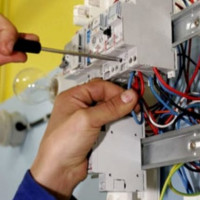 RCD for a water heater: selection criteria + schemes and connection rules
RCD for a water heater: selection criteria + schemes and connection rules 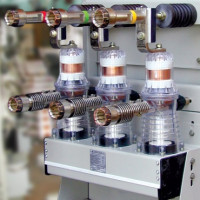 Vacuum switch: device and principle of operation + nuances of choice and connection
Vacuum switch: device and principle of operation + nuances of choice and connection 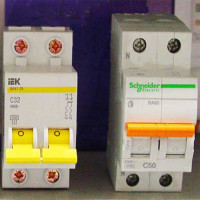 Bipolar and three-pole switches: purpose, characteristics, installation features
Bipolar and three-pole switches: purpose, characteristics, installation features 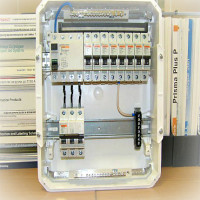 Features of connecting automatic machines and RCDs in the shield: circuits + installation rules
Features of connecting automatic machines and RCDs in the shield: circuits + installation rules 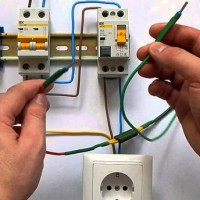 Rules for connecting an RCD to a single-phase network without grounding: the best schemes + operating procedure
Rules for connecting an RCD to a single-phase network without grounding: the best schemes + operating procedure 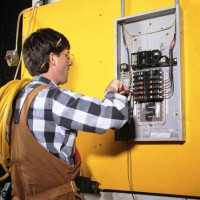 How to connect an RCD: circuits, connection options, safety rules
How to connect an RCD: circuits, connection options, safety rules  How much does it cost to connect gas to a private house: the price of organizing gas supply
How much does it cost to connect gas to a private house: the price of organizing gas supply  The best washing machines with dryer: model rating and customer tips
The best washing machines with dryer: model rating and customer tips  What is the color temperature of light and the nuances of choosing the temperature of the lamps to suit your needs
What is the color temperature of light and the nuances of choosing the temperature of the lamps to suit your needs  Replacement of a geyser in an apartment: replacement paperwork + basic norms and requirements
Replacement of a geyser in an apartment: replacement paperwork + basic norms and requirements